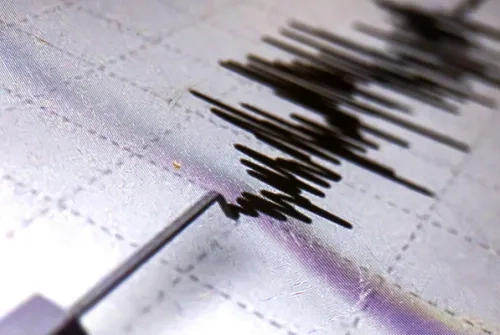Alo Yeditepe
What Should We Do Before, During and After an Earthquake?
After earthquakes and bitter disasters, earthquake bags come to the agenda again. So, is the earthquake bag really of vital importance? Or are there other basic details that ensure survival during and after the earthquake? AKUT Founding President and Yeditepe University Hospitals Emergency Medicine Specialist Asst. Prof. Dr. Mustafa Ferudun Çelikmen explained the measures to be taken against the earthquake and what should be done during an earthquake.
Where Did I Put My Whistle, Earthquake Bag?
On February 6, we experienced two earthquakes that affected millions of people in 10 provinces based in Kahramanmaraş and all over Turkey. After these earthquakes, which caused great losses, we are waiting for the news of the people who will be rescued from the wreckage with hope, and on the other hand, we are trying to heal our wounds.
There are many fault zones within the borders of our country, and we face the reality of earthquakes at any moment. We are afraid and want to be aware of how to prepare for the earthquake. We read the news on this subject and listen to the experts talking on TV. Until another earthquake and our fears are triggered again...
We all know that the first 72 hours are the most critical period for those under the wreckage, but it is also a fact that there are people who survived the earthquake days or even weeks later. So, what is the most important factor in the survival of those rescued from the wreckage? Is it vital to be prepared for an earthquake with an earthquake bag? Should I keep an earthquake bag in every home?
AKUT Founder President, Yeditepe University Hospitals Emergency Medicine Specialist Asst. Prof. Dr. Mustafa Ferudun Çelikmen stated that there is no earthquake bag next to anyone who survived the earthquakes with his domestic and international team and shared what to do during the earthquake and life-saving information.
‘Earthquake Bag is Absolutely Not Necessary’
For years, we have been told that there must be an earthquake bag in every house in order to be prepared for an earthquake. So, what's the point of the earthquake bag? Is its purpose to ensure our survival if we are under debris after an earthquake, or to facilitate our work outside when we survive the earthquake safely, to meet our needs until help arrives?
Where do we keep the earthquake bag? At home or in the car?
"First of all, how do you keep these bags in your car?" Çelikmen stated that almost all of the personal vehicles in the earthquake zones are currently under debris, and the situation will not be different in future earthquakes. According to the new building regulation, the vehicles that should be kept in the parking lots under the building will be under debris if the building is destroyed during the earthquake and also added the following:
"Another disadvantage of preparing earthquake bags and storing them in vehicles is the deterioration of the things we put in them. The interior of the car is not a healthy storage environment. The position you take during an earthquake is much more important than that.”
The earthquake bag is a shackle when you first feel the shake when you should implement the emergency action plan you designed in advance to avoid being trapped in debris with your loved ones. The first thing you need to do to save your life is not to have a bag that has become a suitcase, but to have a mobile phone and a pet bottle of water near you, even at night.
Earthquake Bag is Not a Suitcase
Emergency Medicine Specialist Asst. Prof. Dr. Mustafa Ferudun Çelikmen said, “What you call an earthquake bag is literally turning into something like a suitcase with what is to be stuffed into it,” and added:
“These bags have jewelry, money eyes, passport, and precious paper parts. You need to keep this bag close to you at home so that the thief does not steal it. Let's assume your earthquake bag is at home. When you felt a shake, will you leave the child behind and hug this bag?"
A Culture from the Second World War
Emphasizing that we should know the origin of what is touted as an earthquake bag and where it came from, Çelikmen gave the following information:
“The earthquake bag was created during the bombing of London during World War II since people who stayed in the bunker on the subway needed food, needed radio to communicate, needed canned food to feed, needed light to light up, needed blankets to warm up. That is why earthquake bags are unnecessary. Those who manage to get rid of the debris, be sure that they do not need these foods. The man who emerges from the wreckage can find even in the poorest countries (China, Pakistan, India), a loaf of bread, a bowl of soup.”
"Not a Single Person Was Rescued from the Rubble for Having an Earthquake Bag with Them"
We asked Çelikmen: "Have you seen the earthquake bag with the survivors?" Çelikmen stated: "Until today, not a single person has been saved from the wreckage because he has an earthquake bag with him. People cannot even move under the wreckage. Even if the bag is in front of him, he cannot reach out. That is why I say, 'The earthquake bag is useless.'
Make Sure You Have Water at Your Bedside
Stating that it has been involved in post-disaster activities since 1992, Çelikmen remarked: 'I always advised everyone to put a bottle of water next to the bed, not just for the earthquake.
Cell Phones can Substitute an Earthquake Bag
The most important thing is that the mobile phones. Cell phones are an invention even more important than fire and the wheel. Çelikmen remarked once again that only water and the phone will be sufficient after the earthquake, and that we do not need those bags that have become suitcases.
We asked Çelikmen whether the whistle is equally important for those who are under the wreckage. Çelikmen replied: 'Mobile phones have features such as a whistle, lantern, radio, and QR code to withdraw money. It will help you both to notify the rescue teams by throwing the location and to contact the outside. In short, the phones are almost an Earthquake Bag, but they should be within reach in case of shaking.
Is the Collapse-Trap-Hold Technique a Mistake?
It has been said for years that the 'Collapse-Close-Hold' technique, which suggests collapsing during an earthquake and clinging to the foot of a table-like object, is correct, however, Çelikmen emphasized that the life-saving fetal position should be applied instead.
Stating that experts are defending the collapse-trap-hold technique, but there is not a single case that survived with the collapse-trap-hold method in a building that has been demolished so far, Çelikmen remarked that if the building is demolished while the person is in this position, the deadliest blow will come to the head-neck-spine. Çelikmen explained the origin of this method and the reason for its application in us as follows:
“During the Cold War years, the Soviet Union taught its citizens this method, which aims to stand below the glass level against gamma radiation that passes through the glass but cannot pass through the brick because the US detonated a hydrogen bomb. So, this is 1950s knowledge, but unfortunately it has become a common conservation technique over time. This technique can be used in buildings that will not be demolished, but this technique cannot be used in the buildings that are demolished. In Japan, it may be valid in the United States, because their problem is not to destroy the building, but to prevent something from falling on them. Their problem and ours are not the same. There have been no survivors in this position so far.”
The Truth of the Survivors of the Rubble: Fetal Position
Of course, there is no guarantee of any position to survive under the wreckage, but in what position are the people who have been rescued under the wreckage to date usually in?
Stating that the desired height in the collapse-trap-hold position is 80-100 centimeters and that what he proposed was to lie down on the ground next to a solid object and take the fetal position, Çelikmen remarked that the people they saved were always in this position. This position would increase the chance of survival as it reduced the target and explained why it was the most ideal position:
“Especially in this cold weather, the healthiest position against the risk of hypothermia is the fetal position. Think about what you do involuntarily when the quilt is pulled from you. You shrink and take the fetal position, and that protects you. Why are babies and children the most likely to be pulled out of the wreckage? Because they are small, instinctively take this position, and the risk of injury is reduced. This was the case in the Izmir Earthquake, and it was the same in this earthquake. Because they are small, the risk of injury is reduced.”
Çelikmen reminded us that those who were taken out late under the wreckage may have life threats due to Crush syndrome. Nearly 250 people were rescued from earthquakes, these people were lying in fetal positions under the wreckage. This was the reality of the survivors rather than theoretical information.
Stating that the common misconception of ‘Get under the desk during an earthquake’ was taught for years, but this practice is wrong, Çelikmen also added: ''We simulated this situation with dummies in two buildings where the demolition decision was taken, and we saw that the target reduction, that is, the fetal position, was more protective than possible in addition to the items that were not destroyed. If the building is demolished and left under debris, this chance should be used well."
The Life Triangle: Like a Pen on a Book Page
“Even if the building collapses, the columns and beams that sustain the building form a triangle of life, just like the gaps created by the pencil between the pages of the book.” Çelikmen also gave examples of these triangles of life:
“Fill your books or put your linens in the bazaar under the beds, so that it is full. Items that may fall on your head should be fixed. Lie down next to the bed and take the fetal position. Or a full dowry chest is another solid item that can protect you. Items such as refrigerators and washing machines are large items, but they are hollow and thin because they are made of sheet metal, so we cannot trust them. ”
Çelikmen also said that the books show serious resistance to reinforced concrete piles and that we can protect our heads with thick books without the need for things like helmets and helmets.
The Difference Between 40 Centimeters and 1 Meter Saves Lives
Çelikmen: "1 meter is needed in the collapse-trap-hold position, and 40-centimeter hip height is required in the fetal position. The difference between 40 centimeters and 1 meter saves lives. Çelikmen emphasized how vital the position we took in the event of AN EARTHQUAKE.
Çelikmen underlined that awakening measures such as tying a fishing bell under the lamp-chandeliers hanging from the ceiling as well as special seismic alarms for those who cannot wake up in the night shaking, putting water in a plastic cup that will fall on their head while shaking on a shelf at the bedside, putting a piggy bank that will jingle when you think about shaking on the top edge of things such as the wardrobe will also work.




